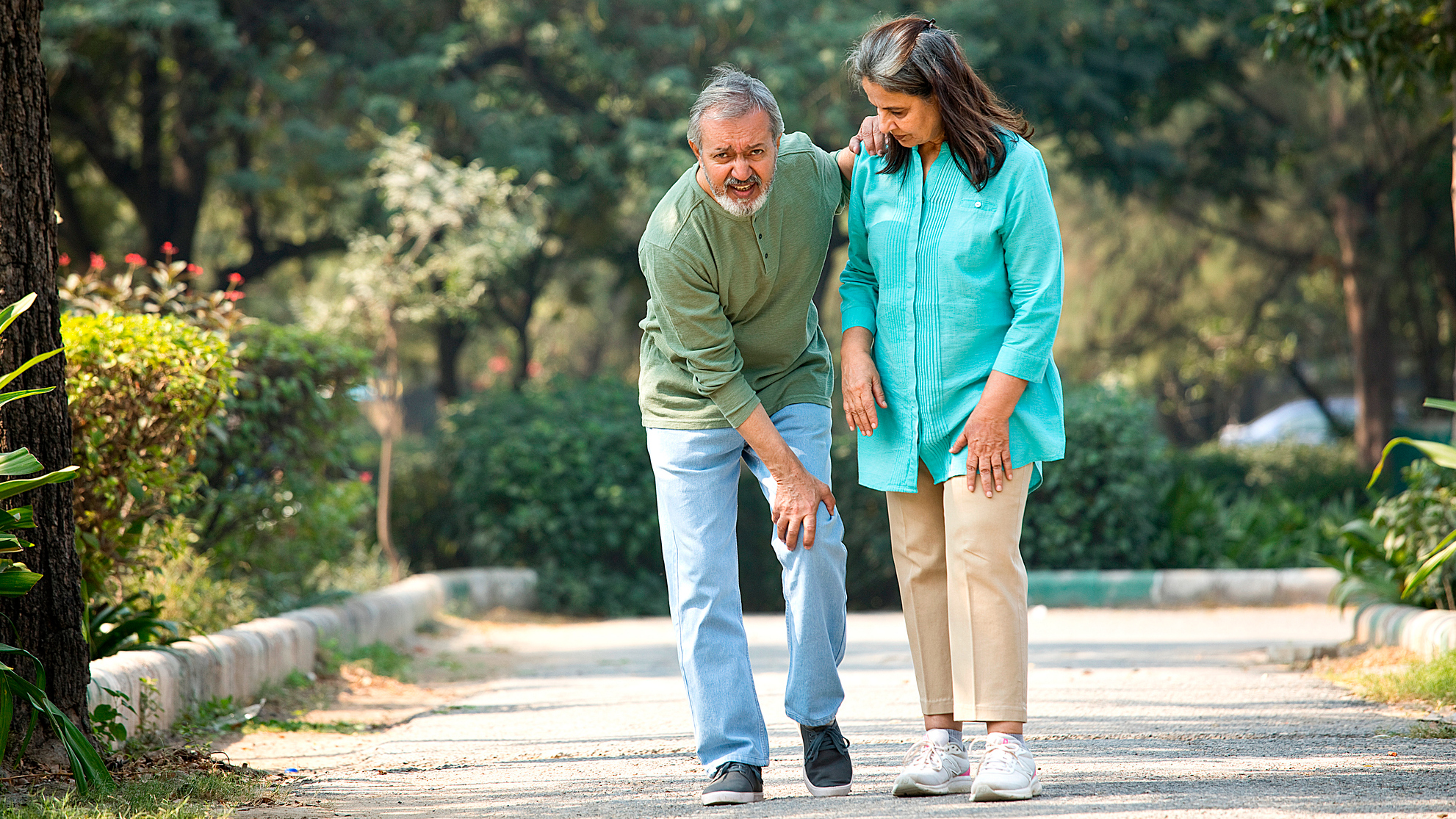A physical therapist shares five simple things you can do to reduce knee pain when you walk
Plus, a 10-minute strength routine to support your knee joints

Walking regularly is a surefire way to boost your physical and mental wellbeing, but one thing that can get in the way is knee pain.
And when knee pain is triggered by every step you take, any discomfort can turn a stroll into a struggle.
Whether you’re recovering from an injury or dealing with persistent pain, there are a few things you can do to help ease symptoms, although it’s always worth consulting a health professional first.
Physiotherapist and founder of The Swiss Touch Laura Wilson shares five expert ways to help reduce knee pain while walking and a 10-minute routine to strengthen the muscles around your knees.
Five expert tips to to manage knee pain
1. Rethink your footwear
The right shoes or boots can support your feet and ease pressure on muscles and joints during walking, helping to prevent injury.
“A good pair of trainers that can absorb shock can really help. If our muscles are not strong enough to do that, we can provide that connection via a shoe,” says Wilson.
While this is only a short-term fix, it’s one that could provide almost instant relief. Check out our guide to the best walking shoes for tried-and-tested recommendations.
Start your week with achievable workout ideas, health tips and wellbeing advice in your inbox.
2. Move more throughout the day
If you're sitting all day before going on a walk, your joints might be stiff, which could lead to pain. “The key is to move little and often. Our joints need to stay lubricated and movement is really important for that,” says Wilson.
Try getting up every 20 minutes, even if it’s just to walk around the room for 30 seconds or do a couple of simple stretches.

3. Consider your lifestyle
This isn’t always the case, but excess bodyweight can contribute to knee pain by placing added pressure on joints. Losing some weight in a gradual, healthy way could help reduce that strain.
“If you’re getting knee pain, it could be because there’s too much weight going through your knee joint,’ says Wilson. “Eating well, moving more and trying to aid weight loss if there is weight to lose may help.”
4. Break up your walks
If you’re mostly doing long, continuous walks, it may be too much for your knees right now. That doesn’t mean walking less, but Wilson suggests breaking up your walks into smaller chunks.
“Stick to shorter bursts of movement,” says Wilson. “Don’t push into any sharp pain. Walk until just before pain starts, then rest and go out and walk more later.”
5. Strengthen your lower body
“If you're getting knee pain, you need to strengthen the muscles around the knee joint,” says Wilson.
“Often knee pain happens because there’s weakness in the quads, hamstrings and calves.”
10-minute knee-strengthening workout
Wilson has shared an equipment-free routine to build up strength in the muscles surrounding the knees.
Aim for 10-12 repetitions of each move, unless you experience pain, in which case stick to a lower rep range.
"All these exercises should be pain free so only work within your pain-free range," says Wilson.
Do the same number of repetitions on each side, however, start with your more painful side first and match the repetitions on the other side. The whole routine should take around 10 minutes.
If you want to make the routine more challenging, try adding some weights. If you don't own weights, Wilson suggests using a full water bottle or bag of sugar.
1. Sit to stand
Reps: 10-12
- Sit on a chair (not a sofa) with your feet hip-distance apart.
- Stand up without using your hands, keeping your chest upright and pushing through your feet.
- Sit back into the chair with control.
2. Calf raise
Reps: 10-12
- Stand with your feet hip-distance apart and place your hands on a wall for support if needed.
- Engage your core and rise up onto your toes.
- Hold for a second then lower your heels with control.
3. Squat
Reps: 10-12
- Stand with your feet shoulder-width apart, toes slightly turned out.
- Engage your core, then bend your knees and push your hips back to lower as if sitting in a chair, until your thighs are parallel to the floor.
- Push through your feet to return to standing.
- Keep your chest facing forward and core engaged throughout.
4. Step-up
Reps: 10-12 each side
- Use the bottom step of your stairs or another stable platform that can take your weight.
- Place your right foot on the step.
- Extend your right leg and bring your left foot onto the step.
- Return your left foot to the report with control.
- Complete the repetitions on one leg, then switch legs.
Wilson recommends doing this routine three to four times a week to effectively strengthen the muscles surrounding the knee.
Perform this as a full routine or incorporate single moves into your day. For example, you can do calf raises while brushing your teeth or squat while watching TV.
Consistency is essential so find ways to make exercise convenient in a way that works for you.
Alice Porter is a freelance journalist covering lifestyle topics including health, fitness and wellness. She is particularly interested in women's health, strength training and fitness trends and writes for publications including Stylist Magazine, Refinery29, The Independent and Glamour Magazine. Like many other people, Alice's personal interest in combining HIIT training with strength work quickly turned into a CrossFit obsession and she trains at a box in south London. When she's not throwing weights around or attempting handstand push-ups, you can probably find her on long walks in nature, buried in a book or hopping on a flight to just about anywhere it will take her.
